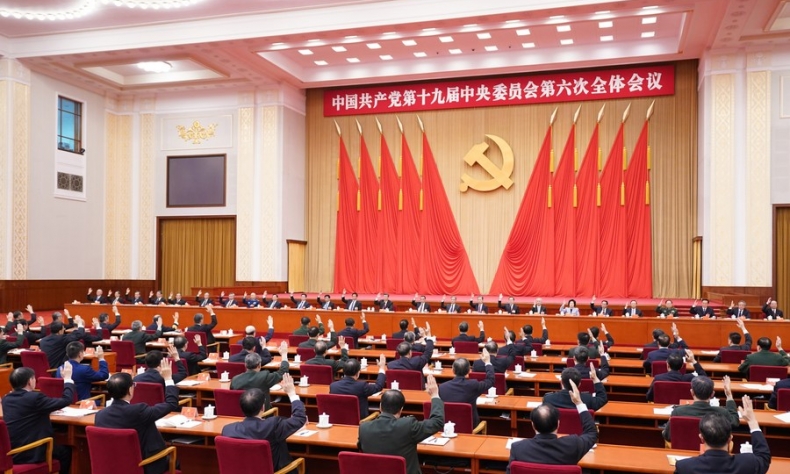Analyzing 100 Years of Party History Sheds More Light on China’s Evolution

The guidance of socialism with Chinese characteristics and the adherence to the policy of reform and opening up help China to transition from poverty to prosperity and from weakness to strength.
The Sixth Plenary Session of the 19th Central Committee of the Communist Party of China (CPC), held in Beijing from November 8 to 11, focused on the Party’s achievements over the past century and the lessons it has drawn from this process.
This session is particularly crucial for today’s China. Since its inception, the CPC has devoted itself to the cause of revitalizing the Chinese nation. The great rejuvenation is divided into two stages, also known as the two centenary goals. The first refers to the completion of building a moderately prosperous society in all respects by the centenary of the CPC in 2021, and the second is to transform China into a modern socialist country that is prosperous, strong, democratic, culturally advanced, harmonious and beautiful by the centenary of the People’s Republic of China (PRC)—founded in 1949. July 1 this year marked the CPC’s 100th anniversary and the nation’s achievement of the first goal. Today, the whole country marches toward the second goal under the Party’s leadership. Convened at this juncture of transitioning from the first goal to the second, the Sixth Plenary Session was entrusted with charting a clearer course for the nation’s future.
History offers important insights. The most valuable experience taken from the past century would be the importance of adhering to the Party’s leadership, sticking to the road of socialism with Chinese characteristics and to the reform and opening-up policy, as these are the three forces that have steered China through various difficulties and toward prosperity.

It was under the Party’s leadership that the Chinese people finally overthrew the “three big mountains” weighing on them, namely, imperialism, feudalism and bureaucrat-capitalism, and saw the founding of the PRC, bringing to a close the century-long chapter of semi-feudal and semi-colonial history. Emerging from disintegration, the people achieved national independence and liberation, and disposed themselves of various unequal treaties imposed by imperialist powers. These efforts helped to create the basic social setting for the rejuvenation of the Chinese nation.
The guidance of socialism with Chinese characteristics and the adherence to the policy of reform and opening up help China to transition from poverty to prosperity and from weakness to strength. China has achieved high-quality development in economy, politics, culture, society as well as made palpable ecological progress. The great rejuvenation is backed by fundamental political and systemic conditions.
Under the leadership of the Party, the Chinese people have seen rapid economic growth, social progress and an upgrade in living standards. In 2020, China’s economic aggregate accounted for more than 17 percent of the world’s total, securing second place. With its per-capita GDP surpassing $10,000, China now has the largest group of middle-income earners worldwide, marking its transition from a low-income country to an upper middle-income one. Meanwhile, the country is developing into an innovative science and technology power. The nation has set up a social safety net of the largest scale in the world as well as the biggest green development system. All these offer a material guarantee for the national rejuvenation.
An analysis of the past century’s Party endeavors will shed more light on the factors that have made it possible for China to achieve so much in so little time and accordingly help the nation at large carve out a better future en route to realizing the second centenary goal.
 Facebook
Facebook
 Twitter
Twitter
 Linkedin
Linkedin
 Google +
Google +










